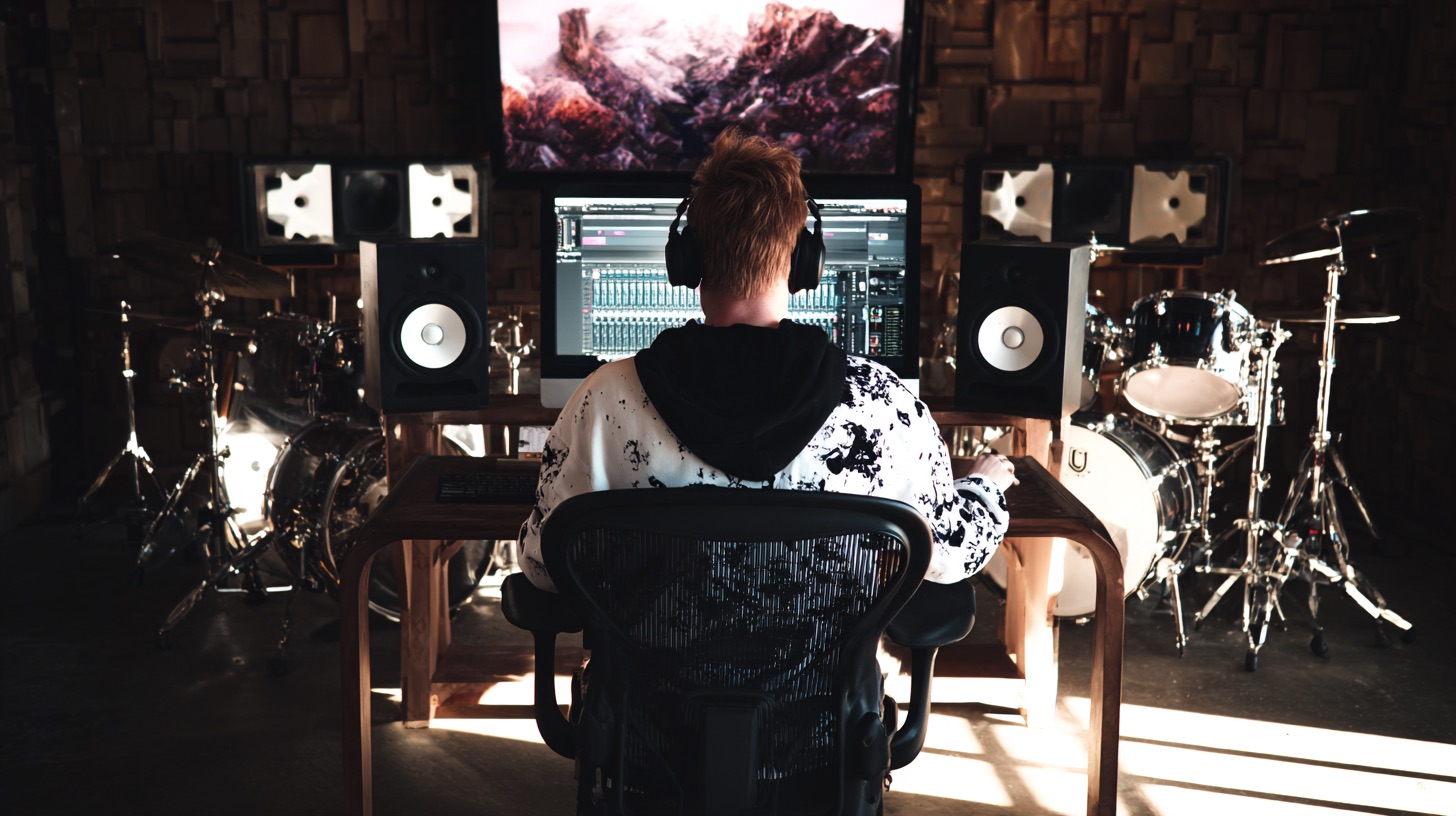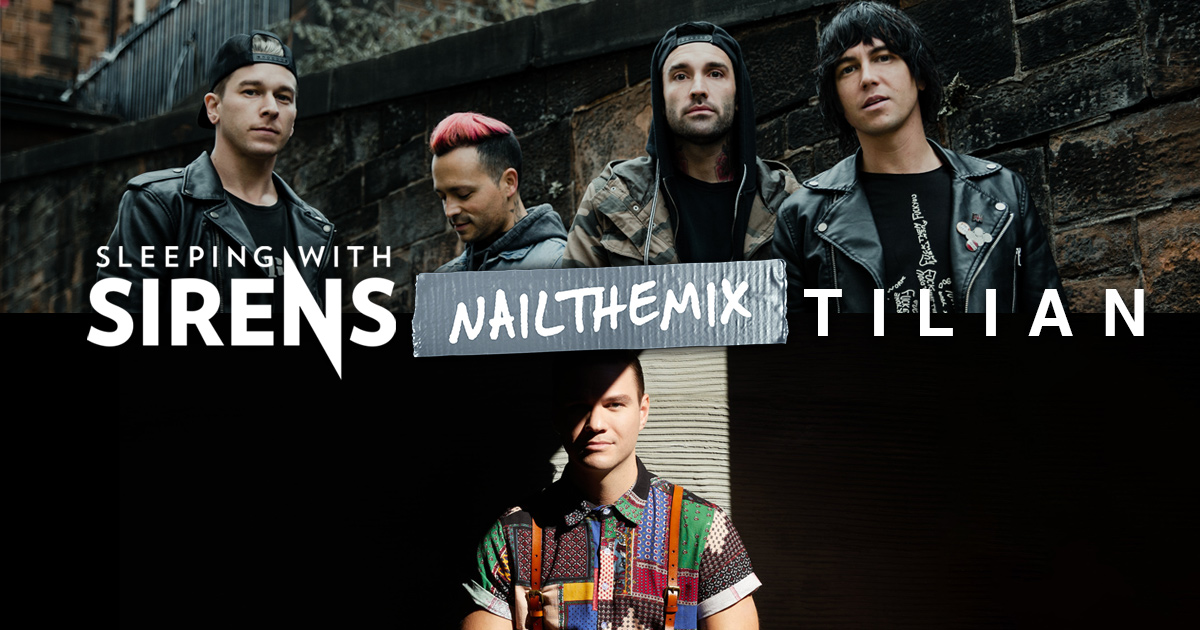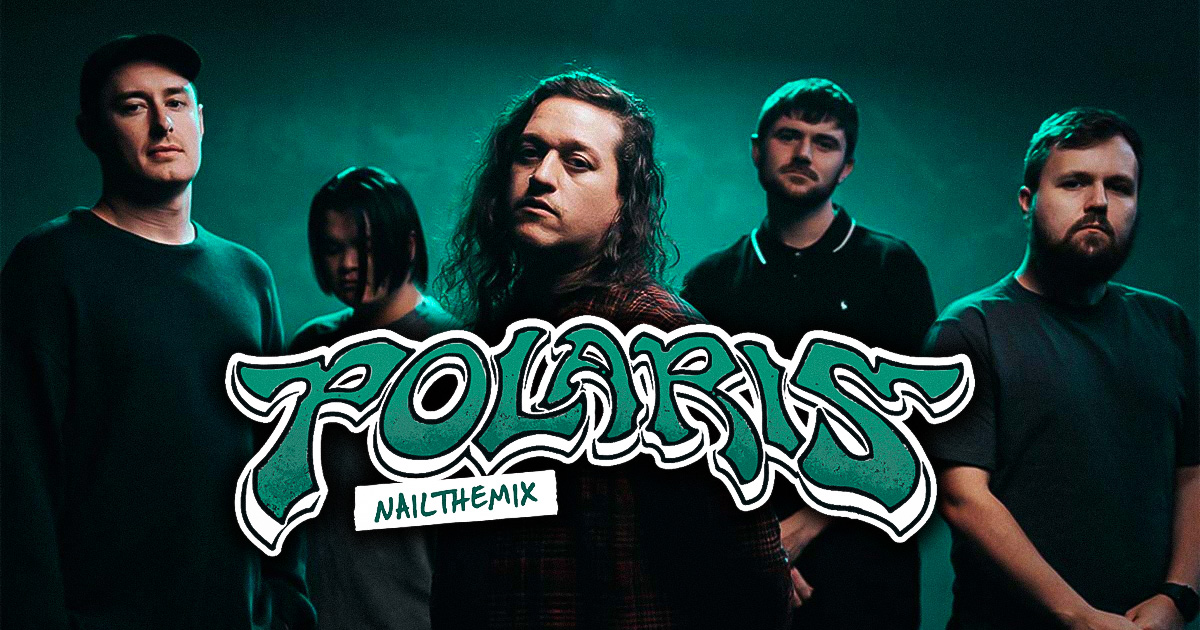
Reverb Meaning: What It Is & How Metal Producers Use It
Nail The Mix Staff
So, What Exactly IS Reverb? The Nitty-Gritty
At its core, reverb (short for reverberation) is the sound of reflections. When a sound occurs in a physical space, it bounces off surfaces – walls, floors, ceilings, whatever. These reflections, thousands of them, arrive at your ears at slightly different times and intensities, creating a complex tail of sound after the initial, direct sound. That tail? That’s reverb.
It’s different from delay, which is typically distinct, audible echoes. Reverb is more of a wash, a sense of atmosphere.
Most reverb plugins, like the Valhalla DSP series (Supermassive, VintageVerb, Room, Plate) or classics like Lexicon’s PCM Native Reverbs, give you control over several key parameters:
- Decay / Reverb Time (RT60): How long it takes for the reverb tail to fade away (technically, by 60dB). Long decay = big space (cathedral). Short decay = small space (closet).
- Pre-Delay: The amount of time before the reverb reflections start after the dry signal. Super important, we’ll get to why later.
- Size / Room Size: Affects the perceived dimensions of the simulated space. Bigger size often means a longer, more diffuse reverb.
- Diffusion: Controls the density of the reflections. Low diffusion can sound like distinct echoes, while high diffusion creates a smoother, more washed-out sound.
- Early Reflections: The first few, distinct reflections you hear. These give strong cues about the size and shape of the space.
- Mix / Wet/Dry: How much of the reverberated (wet) signal is blended with the original (dry) signal. Usually, you’ll use reverb on an aux send, keeping the plugin 100% wet and controlling the blend with the send level.
Understanding these controls is your first step to making reverb work for you, not against you.
Why Reverb Matters in Metal (Even When You Think It Doesn’t)
Metal can be fast, dense, and aggressive. So, intuitively, you might think “less reverb is more.” And sometimes, that’s true – you don’t want to turn your tight, chunky rhythm guitars into a soupy mess. But reverb plays a crucial role:
- Adding Depth and Dimension: Even subtle reverb can push elements back in the mix, creating a front-to-back depth that makes your mix sound bigger and more three-dimensional.
- Creating Cohesion (Glue): A shared reverb across multiple elements (like a drum bus or all vocals) can make them sound like they’re performing in the same space, helping them gel.
- Enhancing Impact: A short, bright plate on a snare can give it crack and sustain. A quick room sound on toms can make them explode.
- Atmosphere and Emotion: This is the obvious one. Long, lush reverbs on clean guitars, synths, or vocals can create epic, ethereal, or melancholic moods. Think the intro to an Opeth track or the haunting vocals in a Deafheaven song.
- Special Effects: Gated reverbs, massive pre-delays, reverse reverbs – all tools for creative sound design.
The trick in metal is often about control and subtlety for core elements, then knowing when to go big for effect.
Types of Reverb and Their Metal Applications
Different reverb types emulate different kinds of spaces or mechanical devices, each with its own character. Knowing which to reach for is key.
Plate Reverb: The Classic Sheen
Plate reverbs don’t simulate a real room. They’re literally large, thin metal plates with transducers. The sound is fed into the plate, it vibrates, and those vibrations are picked up.
- Sound: Bright, dense, with a smooth, metallic character. Doesn’t have early reflections like a room, so it sits nicely in a mix without sounding too “spacey.”
- Metal Uses: A go-to for vocals, especially lead vocals, to give them polish and help them sit on top of a dense mix. Great for snares to add that classic crack and sustain without a long tail. Think Soundtoys Little Plate, ValhallaPlate, or the plate emulations in Arturia’s Rev PLATE-140.
- Pro Tip: Try a decay of 1-2 seconds on a vocal plate, then use pre-delay to keep the consonants clear. High-pass it to avoid mud!
Spring Reverb: Twang and Vibe (But Use With Caution)
These use actual springs to create reverberation. Famous in guitar amps.
- Sound: Boingy, metallic, characterful, can be a bit “sproingy” or “drippy.”
- Metal Uses: Less common for general mixing duties as they can sound messy quickly. However, they’re awesome for specific guitar effects – think surf-rock-gone-evil, or adding a vintage, gritty vibe to a solo. Some producers dig them for trashy vocal effects or on a snare for a lo-fi sound. Check out guitar amp sims like Neural DSP plugins or IK Multimedia AmpliTube, or dedicated plugins like Softube Spring Reverb or the UAD AKG BX 20.
- Pro Tip: Often best used sparingly or for a very specific, characterful sound.
Hall Reverb: Epic Spaces
Designed to emulate large concert halls or auditoriums.
- Sound: Large, smooth, often with long decay times. Can sound very natural or incredibly vast.
- Metal Uses: Perfect for orchestral elements, synth pads, clean guitar intros, or those “stadium rock” moments. A long hall on a guitar solo can make it sound massive. Sometimes used very subtly on a drum bus to give an overall sense of space. ValhallaVintageVerb (try the Concert Hall or Large Hall modes), FabFilter Pro-R, or the hall algorithms in the Lexicon PCM Native Reverb Bundle are fantastic choices.
- Pro Tip: For an epic guitar lead, try a hall with a 3-5 second decay, but use plenty of pre-delay (maybe 60-100ms) so the initial pick attack cuts through before the wash.
Room Reverb: Adding Realistic Depth
Room reverb simulates the acoustics of smaller, more conventional rooms.
- Sound: Can range from tight and boxy to more open, depending on the “room” size and material simulation. Generally more natural sounding than plates or springs for creating a sense of real space.
- Metal Uses: Excellent for drums! Adding a room reverb to your drum bus (or individual drum shells) can make them sound like they were recorded in a great live room, adding punch and cohesion. Good for giving guitars a bit of body without washing them out, or for a more intimate vocal sound. ValhallaRoom, FabFilter Pro-R (Room mode), or Waves RVerb (Room algo) are solid.
- Pro Tip: For a punchy drum room, try a short decay (0.5-1s) and keep it fairly low in the mix. You want to feel it more than hear it distinctly.
Chamber Reverb: Denser Than Rooms, Smoother Than Plates?
Historically, chambers were actual rooms built specifically for reverberation, often with highly reflective, non-parallel walls.
- Sound: Dense, rich, often smooth. They tend to have a character that’s less overtly “roomy” than a room verb and less metallic than a plate.
- Metal Uses: Great on vocals as an alternative to plates, often feeling a bit warmer. Can work well on strings, horns, or even snare for a rich, diffuse tail. Think ValhallaVintageVerb (Chamber mode), UA Capitol Chambers, or Waves Abbey Road Chambers.
- Pro Tip: Chambers can add a lovely richness to backing vocals, helping them blend.
Algorithmic vs. Convolution Reverb: What’s the Diff?
- Algorithmic Reverbs: These use complex mathematical algorithms to simulate the sound of reflections. Plugins like most Valhalla reverbs, Lexicons, and FabFilter Pro-R are algorithmic.
- Pros: Highly tweakable, can create spaces that don’t exist in reality, generally less CPU-intensive.
- Convolution Reverbs: These use Impulse Responses (IRs) – actual recordings of how a real space (or piece of gear) responds to a sound. You “load” an IR into the plugin, and it applies that characteristic to your audio. If you’re feeling adventurous, you can even learn to create your own Impulse Responses to capture your unique gear and spaces.
- Pros: Can sound incredibly realistic, great for capturing the sound of famous studios or vintage gear.
- Metal Uses: Both are crucial. Algorithmic verbs are workhorses for most tasks due to their flexibility. Convolution reverbs (like Logic’s Space Designer, Cubase’s REVerence, Altiverb, or Slate Digital’s VerbSuite Classics which uses a hybrid approach with IRs from Bricasti and other units) are killer for realistic drum rooms (imagine loading an IR from Ocean Way Studios) or for emulating specific vintage plate or spring units.
Essential Reverb Techniques for Metal Production
Knowing your reverb types is one thing, applying them effectively is another. Here are some must-know techniques:
The Almighty Pre-Delay
Pre-delay is the short gap of silence between the dry sound and the onset of the reverb. In metal, this is your BEST FRIEND.
- Why it’s crucial: It lets the transient (the initial hit) of your sound cut through clearly before the reverb tail kicks in. This means your snare still punches you in the face, your vocals remain intelligible, and your palm-muted chugs stay tight, even with reverb.
- Actionable Tip: For a snare, try a pre-delay of 20-60ms. For vocals, experiment between 30-80ms. Listen for how it separates the dry attack from the reverb wash. Adjust to taste and tempo.
EQing Your Reverbs: Don’t Muddy the Mix!
This is non-negotiable in a dense metal mix. Reverb can add a ton of low-mid gunk and unnecessary high-end sizzle if you’re not careful.
- Why: You want the effect of the reverb, not all the problematic frequencies it might be exciting.
- Actionable Tip: Always (ALWAYS!) put an EQ after your reverb plugin on the aux track (or use the reverb’s built-in EQ if it’s good).
- High-Pass Filter (HPF): Aggressively cut the lows. For a vocal plate, you might HPF up to 300Hz, 400Hz, or even 500Hz. For a drum room, maybe a bit lower, like 150-250Hz. This cleans up mud and keeps your low end tight.
- Low-Pass Filter (LPF): Tame the highs. Reverb can sometimes accentuate harshness or create an overly shimmery top end that fights with cymbals or guitars. Try LPFing down to 5-8kHz. This helps the reverb sit behind the dry signal.
- Scoop Mids: Sometimes a dip in the mids (250Hz-1kHz) on the reverb itself can help it get out of the way of primary instruments.
- For more on carving out space and cleaning up frequencies that apply to reverb returns too, check out our [EQ hub page: https://www.nailthemix.com/carve-your-core-eq-strategies-for-mixing-modern-metal].
Gated Reverb: That 80s Punch (And Modern Uses)
You know that explosive, abruptly-cut-off snare sound from 80s metal and rock? That’s gated reverb.
- How it works: You send your signal (typically snare) to a reverb (often a plate or bright room with a decent decay), then place a noise gate after the reverb plugin on the aux track. The gate cuts off the reverb tail suddenly.
- Metal Uses: Still a cool effect for snares to give them a massive, short impact. Can work on toms too. Some producers use it subtly on kick for a unique thwack.
- Actionable Tip: Set your reverb decay fairly long (e.g., 2-3 seconds). On the gate, set a fast attack, a medium-to-fast release (this controls how quickly the tail is cut), and adjust the threshold so the gate opens on the snare hit and closes to chop off the tail. Experiment with the hold control on the gate too.
Reverb Throws & Automation: Adding Emphasis
A “throw” (or “spin”) is when you send just a specific word, phrase, or drum hit to a long, noticeable reverb for dramatic effect.
- Metal Uses: Great for the last word of a vocal line, a big snare hit at the end of a fill, a guitar stab, or to make a scream trail off into oblivion.
- Actionable Tip: Set up a dedicated “throw” reverb on an aux track – often a long hall, a massive plate, or even a crazy modulated reverb (like Valhalla Supermassive). Keep the send fader for this aux at zero on your track. Then, automate the send level to shoot up only for the specific moment you want to highlight, then bring it back down.
Compression on Reverb? Yeah, Sometimes!
It might sound weird, but compressing your reverb return can be useful.
- Why:
- Even out the tail: Makes the reverb sustain more consistently.
- Add density: Makes the reverb sound thicker and richer.
- Bring up subtle details: Accentuates the quieter parts of the reverb tail.
- Metal Uses: Can make a vocal reverb sit more steadily in the mix, or make a drum room feel more “explosive” and sustained by bringing up the ambience between hits.
- Actionable Tip: Place a compressor after the reverb plugin on the aux track. For subtle control, use gentle settings (e.g., 2:1 to 4:1 ratio, slow attack, medium release, just a few dB of gain reduction). For a more squashed, “bloom” effect on a drum room, you can get more aggressive.
- If you’re looking to understand how compression can shape your sound beyond just loudness, dive into our [Compression hub page: https://www.nailthemix.com/metal-compression-secrets-beyond-just-making-it-loud].

100+ Insanely Detailed Mixing Tutorials
We leave absolutely nothing out, showing you every single step
Using Reverb to Create Width and Depth
Reverb isn’t just about making things sound “wet.” It’s a powerful tool for manipulating the stereo field and, along with techniques like panning, can create a massive sense of space.
- Width: Most reverb plugins are stereo. Sending a mono source (like a lead vocal or snare) to a stereo reverb instantly makes it occupy a wider space in your mix. You can even pan the dry signal slightly to one side and have the reverb bloom out more to the other.
- Depth: Shorter, darker reverbs tend to push elements further back in the mix. Brighter, longer reverbs can feel closer or more expansive. Use this to your advantage to create layers.
- Pro Tip: Try sending your panned rhythm guitars to slightly different short room reverbs (or the same reverb but EQ’d differently per side) to give them their own subtle space and enhance width.
Common Reverb Mistakes in Metal (And How to Avoid Them)
- Too Much Reverb Overall: The classic beginner mistake. Your mix turns into a washy, undefined mess. Use reverb purposefully and often more subtly than you think, especially on rhythm elements.
- Reverb on Everything (Especially Low End): Slapping the same reverb on every track is a recipe for mud. Be selective. And generally, keep reverb off your sub-bass and kick drum’s fundamental low end unless it’s a very specific effect.
- Not EQing Reverbs: We covered this, but it bears repeating. Mud city and harshness await if you skip this.
- Clashing Reverbs: Using too many different types of reverbs that don’t complement each other can make your mix sound disjointed. Try to create a cohesive sense of space.
- Wrong Reverb for the Job: A massive cathedral reverb on a fast, staccato thrash riff? Probably not gonna work (unless that’s the weird effect you’re after). Match the reverb character to the source and the song.
- Forgetting Pre-Delay on Transients: Leads to mushy drums and buried vocals.
Reverb: Your Secret Weapon for Pro Metal Mixes
So, “reverb meaning” in metal production is far more than just “ambience.” It’s about surgical precision, creative flair, and understanding how to manipulate space to serve the song. From tight, almost invisible rooms that add weight to drums, to shimmering plates that make vocals soar, to vast halls that create epic soundscapes – reverb is an indispensable tool.
Learning these parameters and techniques is a huge step. But seeing how seasoned pros actually apply these concepts in a real metal mix, making those critical decisions on type, decay, EQ, and automation – that’s where the real learning kicks in. If you’re ready to go beyond just understanding parameters and want to see how to craft professional-sounding space and depth in your own metal productions, Nail The Mix offers exactly that. Every month, you get to watch top-tier producers mix songs from bands you love, from scratch, explaining every move.
Now go experiment, listen critically, and start making reverb your bitch!
Get a new set of multi-tracks every month from a world-class artist, a livestream with the producer who mixed it, 100+ tutorials, our exclusive plugins and more
Get Started for $1



